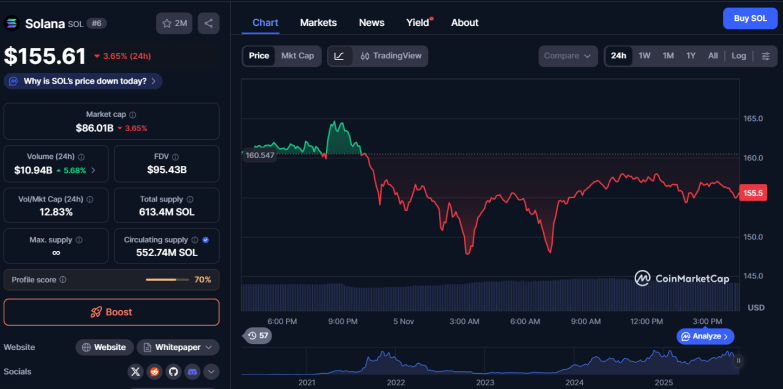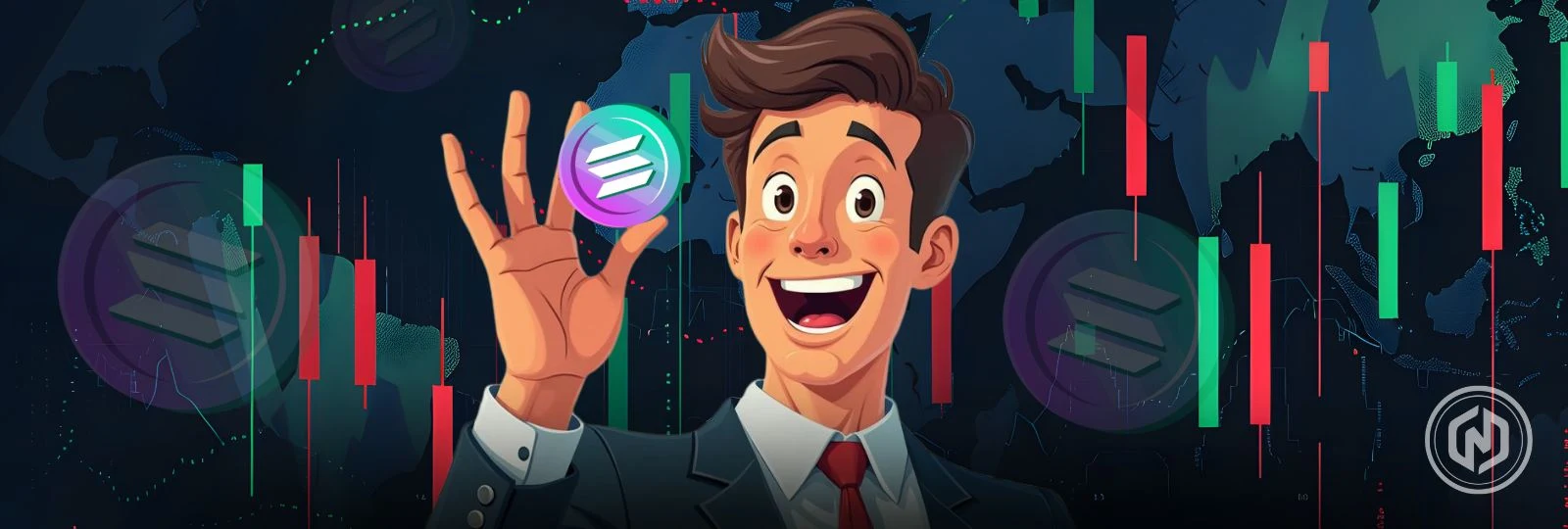Key Highlights:
- Solana ETF see strong inflows whereas BTC and ETH ETFs face outflows.
- Institutional buying is said to be offsetting selling pressure and stabilizing Solana’s price.
- Growing ETF interest positions Solana as a potential third major institutional asset.
Solana-focused ETFs have been seeing consistent institutional buying and have recorded $14.9 million in inflows on November 4, 2025, and extending a six-day streak of accumulation. On the contrary, Bitcoin and Ethereum ETFs have faced nearly $800 million in outflows in recent days, which includes a $566.4 million net withdrawal from Bitcoin spot ETFs and $219.4 million from Ethereum spot ETFs on November 4, 2025.
Even though there have been significant inflows, the price of the SOL token has stayed muted. The token continues to trade around $155, which is way below its yearly peak of $295, and it has slipped below key trend support levels.
Solana ETF Daily Flow – US$
BSOL (Bitwise): 13.2 million
For all the data and disclaimers visit:https://t.co/pLU48sjbXB
— Farside Investors (@FarsideUK) November 5, 2025
This gap between ETF inflows and price performance raises questions about what institutions are expecting and what could be driving this behaviour.
Strong Institutional Demand Amid Price Weakness
Solana ETFs have managed to gather more than $400 million in new institutional inflows in recent times. Bitwise’s Solana Staking ETF (BSOL) has been the primary vehicle for large buyers, accumulating hundreds of millions in assets under management. This indicates that the investors are interested in this product even though the price of the $SOL token is weak
As mentioned above, the price of the token is hovering at $155 mark, and looking at this price, analysts explain that the inflows are absorbing the selling pressure, meaning the new institutional buying is offsetting large sell-offs that would normally push the price downwards.
At press time, the price of the token stands at $155.61 with a dip of 3.65% in the last 24 hours as per CoinMarketCap.

This steady demand amid price softness signals that institutions are potentially using dips and price weakness as accumulation opportunities, buying Solana ETFs discreetly rather than chasing the momentum. The continuous inflow since the launch of the product also indicates confidence in Solana’s underlying technology, ecosystem growth, and staking rewards.
Solana Remains Under Pressure, But Support Levels are Being Tested
While the institutions continue increasing their holdings, Solana’s price has slipped below the recent uptrend. This indicates a weaker momentum on the charts. When you talk about the charts, traders are more focused on the $120 support level. This support level could become important if the selling pressure increases. At the same time, ETF inflows are helping the blockchain balance the market by adding liquidity and reducing the impact of selling.
With both buying and selling in play, the price is moving sideways between $150 and $180. Even with short-term weakness, strong ETF demand signals that institutions expect future growth from upgrades, better staking rewards, and increased adoption.
Strategic Rotation or Early Market Signal?
The strong inflows into Solana ETFs, compared to outflows from Bitcoin and Ethereum ETFs, have sparked debate over whether this signals a deeper shift in investor strategy.
A few of the crypto community members feel that this is a short-term rotation, where investors are moving into Solana because it currently shows better momentum, while waiting for the next wave of interest in Ethereum once upgrades resume.
The other side of the crypto community feels that institutions are slowly adopting a multi-chain approach, building early positions in networks they expect to play a bigger role in diversified crypto portfolios.
Solana’s recent momentum also matches the cautious mood in traditional markets, where investors are unsure about inflation and interest rates. As a result, some traders are spreading their investments across different cryptocurrencies instead of putting everything into Bitcoin or Ethereum. This approach lowers risk while still leaving room for potential gains.
It is still early to conclude if the market shift has begun or not. Bitcoin still acts as a primary asset for institutional portfolios, and Ethereum remains the leading platform for programmable applications. However, Solana’s steady inflows suggest that institutional confidence is starting to expand beyond the usual two-asset focus.
If the inflows continue through mid-November, Solana could begin to solidify its role as the third major asset institutions use for long-term exposure heading into the final quarter.
Also Read: Arthur Hayes: US Government Restart Could Ignite Bitcoin and Zcash Rally



